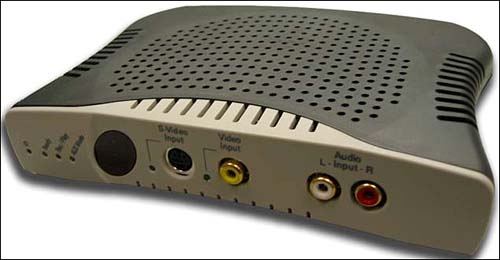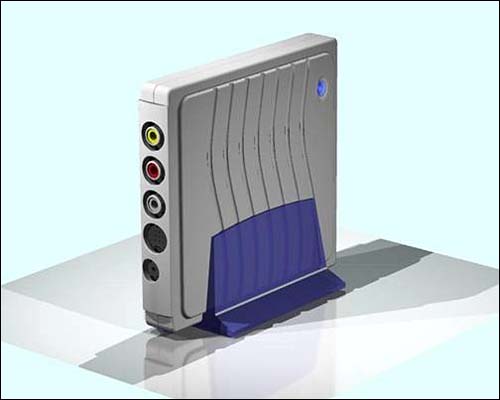Other Media Center Hardware
| Media Center PCs are self-contained units, for the most part. There are a few exceptions, in the form of optional, additional items you may need in order to configure and connect your machine to your existing TV signal and home entertainment equipment (see Chapter 2's section "What You May Need to Supply for Yourself"). However, the Media Center hardware was designed to provide pretty much everything you need, right out of the box. Although Microsoft has at least 15 independent hardware vendors (IHVs) signed up to make various parts and pieces of Media Center systems, most of these items are not made available directly to consumers. Instead, the parts ”mostly internal tuner cards, infrared receivers, and remote controls ”are sold directly to original equipment manufacturers (OEMs), who build the PC systems that we buy. However, there are a few interesting add-on items, which could be used to create a Media Center PC out of an ordinary Windows XP machine ”if Microsoft ever decided to make a version of Windows XP Media Center Edition available as a software-only upgrade. (It's important to note that to date, Microsoft has never confirmed that it has any plans along those lines. ) External TunersAlong with the September 2003 launch of the 2004 edition of Media Center software were a number of announcements from Microsoft IHVs, concerning new external hardware that could theoretically turn just about any PC into a Media Center “capable machine. AVerMediaMilpitas, California “based AVerMedia's external tuner (which the company also refers to as a "notebook tuner," if that gives you any ideas) connects to the Media Center PC using USB 2.0. Shown in Figure 25.10, the small silver-and-black unit provides for IR, S-Video, composite video, and RCA audio inputs. This external AVerMedia device provides a very different tuner solution for a Media Center notebook than Toshiba's current design. The latter allows TV video input only via a lower resolution coax cable. Figure 25.10. The AVerMedia external TV tuner and input device joins the company's full line of internal TV tuner cards for Media Center PCs. EmuzedAnother maker of internal tuner cards, Emuzed, has an external input and tuner device called the Bali-II USB PVR Beanbag (see Figure 25.11). Beanbag is the codename Philips used for its IR receiver/transmitter unit for Media Center, and the term has become somewhat synonymous with external dongle devices that perform these functions. By combining the IR receiver/emitter "beanbag" circuitry with a TV tuner in one convenient package, Emuzed and others say they hope to simplify the design and setup of Media Center systems. Figure 25.11. The Emuzed Bali-II USB PVR Beanbag is similar to the company's Bali USB PVR external TV tuner and input device unit, shown here. PixelaPixela was the third company to join in the Media Center 2004 launch festivities with an external TV tuner/beanbag device. The PIX-MPTV/U4W (see Figure 25.12) offers both S-Video and composite video input, and provides its encoded MPEG-2 video output to the Media Center PC via USB 2.0. Figure 25.12. Pixela's external TV tuner device is an attractive unit that can be laid flat or placed vertically to save space. With the rampant availability of these external tuner/beanbag devices just around the corner, it's likely that a new crop of Media Center portables is about to hit the market. In addition to making it easy for laptop makers to add Media Center hardware capability to their existing products, external tuners have other advantages. When the tuner is placed outside the rather inhospitable confines of the PC enclosure, the electronics no longer have to contend with heat and signal interference. As a result, they can often provide better performance than internal units. Instead of crawling on your hands and knees trying to plug in and twist on your various A/V inputs and outputs, these external devices can offer easier setup and configuration of your video and audio I/O. Just attach everything to the tuner/beanbag device, and then connect that to your PC with a USB cable.
|
EAN: 2147483647
Pages: 159


